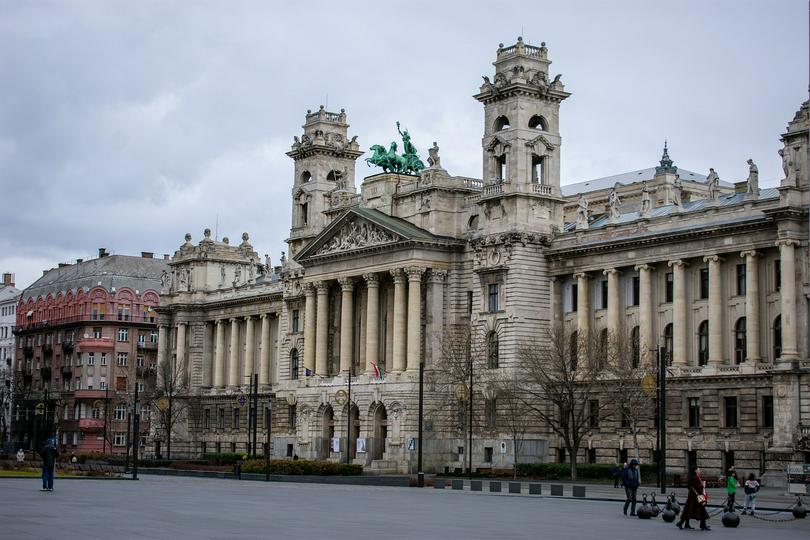Hungary is a country in Central Europe. It borders Slovakia to the north, Ukraine to the northeast, Romania to the east and southeast, Serbia to the south, Croatia and Slovenia to the southwest, and Austria to the west. Hungary covers an area of 93,030 square kilometers (35,920 sq mi) in the Carpathian Basin, with a population of 9,730,000. Hungarian, the official language, is the world's most widely spoken Uralic language, and among the few non-Indo-European languages widely spoken in Europe. Budapest is the country's capital and largest city; other major urban areas include Debrecen, Szeged, Miskolc, Pécs, and Győr.
Religions: 54.3% Christianity, (39.0% Catholicism, 11.8% Protestantism, 3.5% Other Christians).
Brief introduction
As a federation of seven united tribes, Hungary was established in 895, some 50 years after the division of the Carolingian Empire at the Treaty of Verdun in 843, before the unification of the Anglo-Saxon kingdoms. Initially, the rising Principality of Hungary ("Western Tourkia" in medieval Greek sources) was a state created by a semi-nomadic people. It accomplished an enormous transformation into a Christian realm during the 10th century.
This state was well-functioning and the nation's military power allowed the Hungarians to conduct successful fierce campaigns and raids, from Constantinople to as far as today's Spain. The Hungarians defeated no fewer than three major East Frankish imperial armies between 907 and 910. A later defeat at the Battle of Lechfeld in 955 signalled a provisory end to most campaigns on foreign territories, at least towards the West.
The year 972 marked the date when the ruling prince Géza of the Árpád dynasty officially started to integrate Hungary into Christian Western Europe. His first-born son, Saint Stephen I, became the first King of Hungary after defeating his pagan uncle Koppány, who also claimed the throne. Under Stephen, Hungary was recognized as a Catholic Apostolic Kingdom. Applying to Pope Sylvester II, Stephen received the insignia of royalty (including probably a part of the Holy Crown of Hungary, currently kept in the Hungarian Parliament) from the papacy.
By 1006, Stephen had consolidated his power and started sweeping reforms to convert Hungary into a Western feudal state. The country switched to using the Latin language, and until as late as 1844, Latin remained the official language of Hungary. Around that time, Hungary began to become a powerful kingdom.
About the Holy Crown of Hungary
The upper section of the Holy Crown was sent by Pope Sylvester to the Hungarian king, Saint Stephen I (Szent István), in the year 1000. The lower section dates from 1074 when the Emperor of Byzantium, Michael Dukas, presented it to King Géza I. Hungarian tradition holds that the Holy Crown, also known as Saint István’s Crown, is not only a means of coronation, but also a symbol and depository of constitutional power. It was the Holy Crown of Hungary that - more than anything else - united the countries of the Crown and welded them into a single unit as the symbolic holder of the supreme power of the State.
King Saint Stephen I. and his Admonitions
The first Christian King of Hungary showed mercy to defeated enemies and provided a haven for refugees from other lands. Agatha, the daughter of King Stephen, was the wife of Edward; they were both followed to England by a number of Hungarian nobles, who settled in Scotland. There are still some families among the Scottish nobility, like the Drummonds and the Leslies, who trace their descent from the Hungarian nobles in Edward’s entourage.
Saint Stephen’s deeds were always governed by Christian ethics aimed at leading his people toward God. He outlined his principles in his ADMONITIONS to his son, Prince Imre:
If you wish the honor of kingship, be peace-loving. Rule over all without anger, pride or hatred, but with love, tenderness, humanity. Remember always that each one of us has the same standing: nothing exalts a man but humility. Nothing humiliates more than haughtiness and hatred… Peace-loving monarchs rule, the rest only tyrannize. Be patient toward all, influential and destitute alike.
Organized into ten separate chapters, the Admonitions make for the most interesting reading and many parts are still relevant today. Their tone is benign and firm, suggesting István’s anxiety to thoroughly prepare his son for the throne.
A contemporary chronicler wrote of Imre’s early death:
The whole country mourned him, crying disconsolately.
Two generations later, Imre was elevated to sainthood. He is still honored by Hungarian youth as a model of chastity and virtue.
The broken-hearted king Stephen I. died in 1038. His last act was a prayer in which he placed his country under the protection of the Virgin Mary, who has been honored as the “Patroness of Hungary” (Patrona Hungariae) to this day.
Later, in 1083, King István and his son, Prince Imre were canonized by Pope Gregory VII as saints of the Roman Catholic Church. One of Hungary’s most important national holidays, August 20, is dedicated to Saint Stephen’s memory.
(To be continued)












